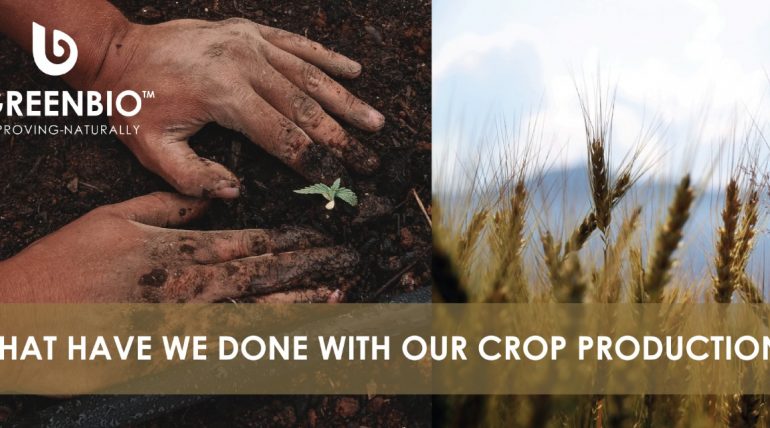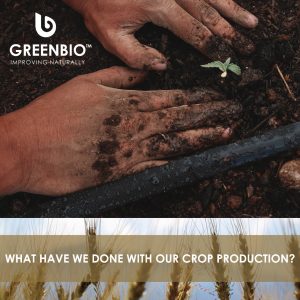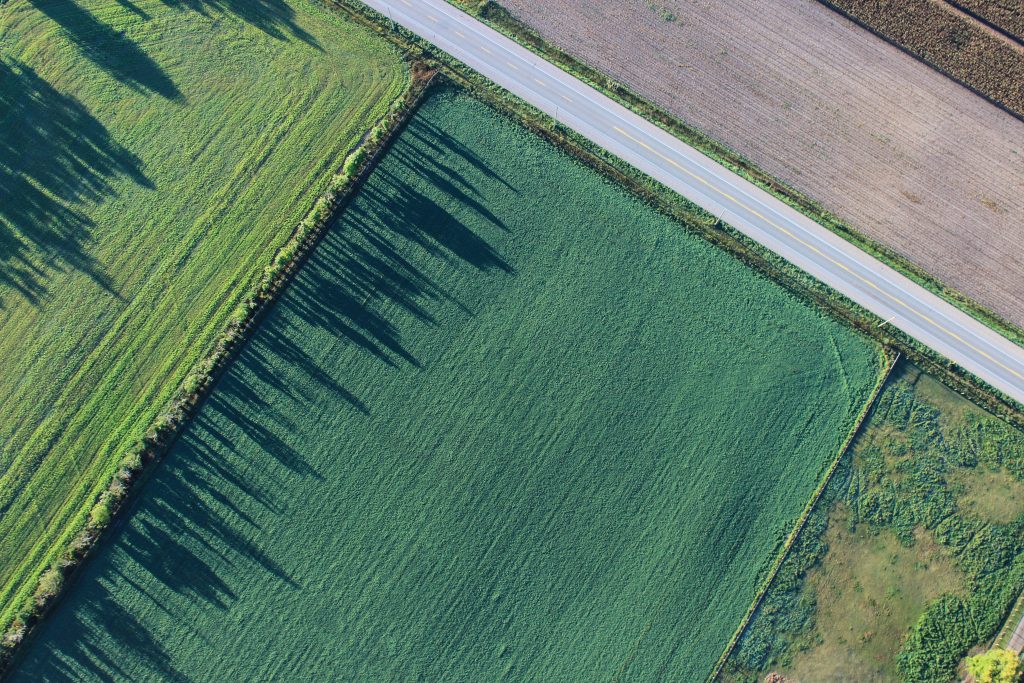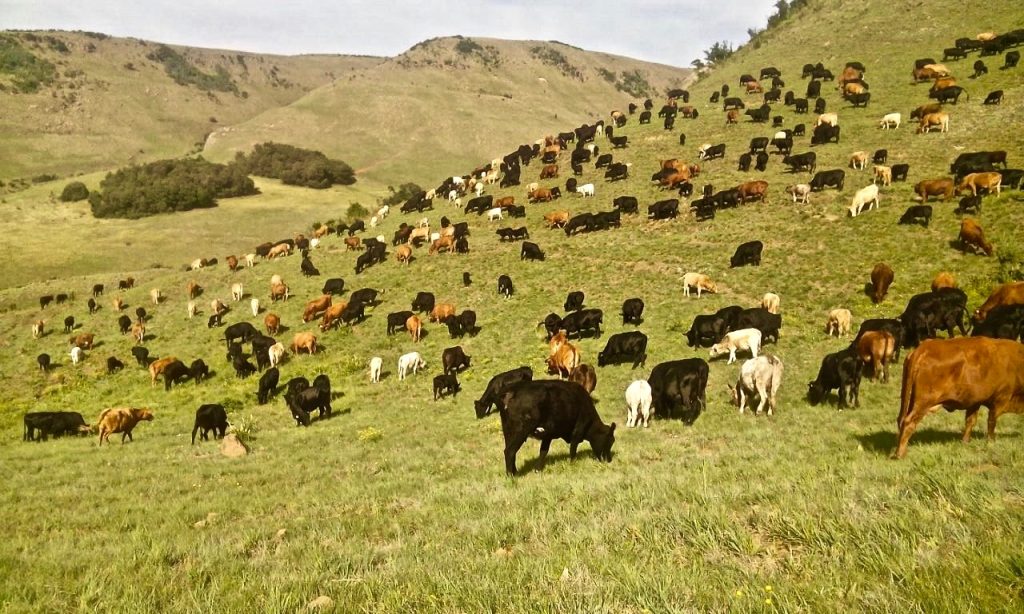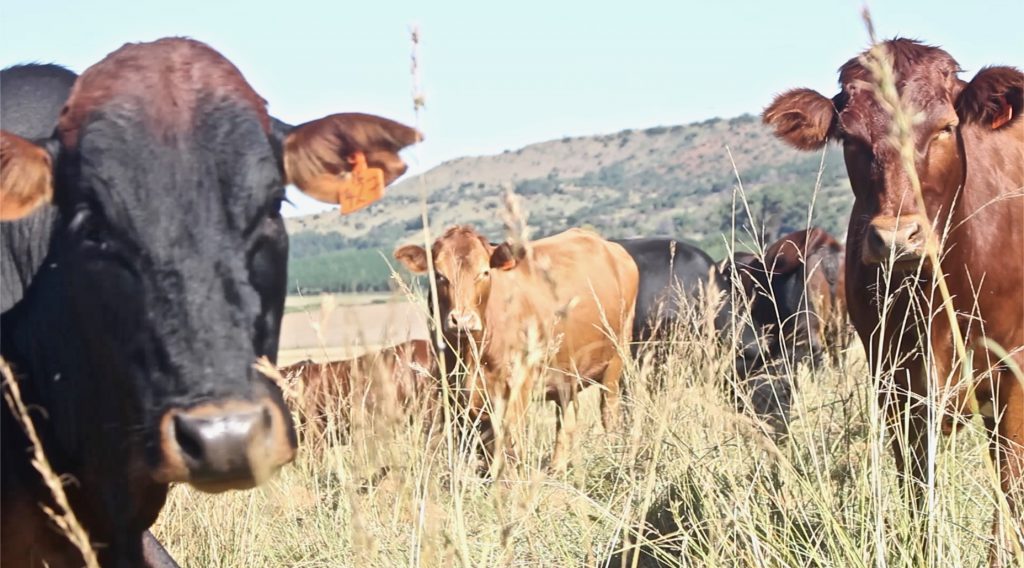Technology Is Not The Enemy (Part One)
Technology is often used as a scapegoat when we need someone to blame for either economic factors or declining qualities in our day-to-day lives. However, that is often not the case, and we should be digging deeper to truly discover the root of the problem.
Over the last century humans have made numerous technological advancements that have impacted our lives in many positive and not so positive way.
Looking through the progress we as humans have made to enhance our quality of life brings up a number of key points. For example, our life expectancy is at its highest, communication is instant regardless of where your loved ones are. We are wealthier than ever before, (on a global scale). The opportunities that young people have are mind-blowing, and everyday advances are so rapid that it is impossible to keep up.
The same has happened in the world of food production. Theoretically, we produce enough food to feed the world, as 33% of the world food production is either wasted, thrown away or lost. Less than 1Bn people starve and new scientific articles now predict that the world population won’t be more than 9Bn people because of the low birth rate experienced in the developed world and developing world. This trend will also be seen in Africa that currently still has population growth.
Agriculture has not been left behind when using technology either. What we have achieved with chemistry, pesticides and herbicides has resulted in our yields having more than doubled. We can farm with animals in areas where the disease profile was so bad that the production animals could not survive. Animals have been cloned and improved to such an extent that we believe we can do everything.

What Is The Cost of Using Technology?
Has technology failed our food production system? How often do we hear from vets that all the antibiograms that they do show that there are no effective antibiotics to treat diarrhea in baby animals?
This is not only in production animals but also in dairies, where the daily struggle with mastitis, lung diseases in calves plays havoc with the profitability of the farmer.
What about the crop farmers that have now got resistant weeds where no herbicide works anymore?
The race is on to find new molecules that will kill the pathogens, at what cost and for how long? Will we be able to use it in the food production system or will such a molecule be reserved for human health only, to fight the superbugs that also have antibiotic resistance to all antibiotics.
Or have we failed ourselves as food producers where we have believed everything that industry has given us for the sake of convenience and profit or even the belief that the chemical companies had the interest of the farmer at heart. What has this cost us. Even if our yields have doubled, has our profitability?
Has the industry failed us for the sake of profits? It must be at least 20 years already that people have sounded the warning signals regarding the overuse of antibiotics and antibiotic growth promoters in production animals.
Why did we not heed the warning, or was it just too easy and we did not want to find an alternative? Rachel Carson in her book Silent Spring, predicted in 1962 what the effects of pesticides would be on wildlife, livestock, pets and humans.

How many of our loved ones must get cancer, chronic diseases or reproductive issues, before we accept the fact that we have polluted our food system and the environment to such an extent that environmental scientists are warning about a 6th mass extinction.
We always have the choice, but we can never control the consequence – what is the consequence of our actions?
- Cost of production is increasing
- Soil is degraded – Biology has been ignored
- Human and animal health has declined
- Corrupt science in the name of profit
- Antibiotics, pesticides and herbicides that don’t work anymore.
- Air, water and soil pollution
- Wildlife – decline in populations, or extinctions due to fertility problems
What must happen when we finally get to the point that we cannot produce food, where chemicals dominate the system, we cannot ignore the fact anymore that we are destroying our soils, the air, our water supplies, and the environment.
Are humans designed to destruct only and for what – money?
When speaking to farmers about pesticides and herbicides its common to hear about their use of the least destructive product, however this is still destructive and we set a bad precedent by thinking it is less serious.
Chemistry Has Destroyed Soil Biology

It is interesting that the chemical and GMO seed companies have worked out that tillage is bad for the soil. And they now recommend no-till or minimal till, but what they fail to tell you is that, the application of inorganic fertiliser, pesticides, herbicides and the use of GMO crops, will never build your soil.
You are wasting your time if you think a living root makes a difference, if any of the recommended chemical practices are used.
Its doubtful there are any farms left that farm with chemicals, GMO crops, herbicides and pesticides, even if they are no-till that have healthy biologically active soil. This will never happen, with our current chemical farming practices.
We must realise that food security is paramount in any nations development and success, but it is also paramount that the food that we produce is nutrient-dense and does not harm the environment, nor the wildlife or human health and quality of life.
Why should we even have minimal concentrations of pesticides or herbicides in our food, have we regressed so much in food production, that the minimal standards are even raised so that we can apply more chemicals?
What is the problem with determining if a chemical is non-toxic or not harmful? This is always determined what was used before, so DDT was believed to be safe for the environment and to human health because it did not kill the farmer after application. It did, however, kill the pests that it meant to control. The reality is that it is now banned in most countries, but there are still traces of the product worldwide, and the by-product DDE is even worse than the active.
The same with the various PCB chemicals, these were used in electrical devices, PCB does not ignite in transformers. PCB however does not breakdown – and they are found in the most remote areas of the world – the interesting thing is the top predators have the highest level of PCB’s and it is stored in their fat.
This is then passed on to the next generation through breastfeeding, causing major hormonal and fertility disruptions. CFC is another product that was heralded as a new invention that is not harmful – 40 years later, after the ozone hole over Antarctica – the product is once again banned, the company has made its profit, the environmental damage has been done, but there is no recourse for the company,
The way forward is to change our mindset and find solutions, so that we can carry on farming in the future, not only for us but for our children and grandchildren. We cannot as food producers think we are using something better or less harmful than before. With some of the products mentioned above it took up to 20 – 30 years to see the full destruction of these products.
As farmers, we cannot afford to do chemical experiments for the chemical companies, on a global scale where the results are only seen when the next generation is born or even worse when the grandchildren are being born. Everything is being affected from the quality of air, water, soil, the survival of the various species, from microorganisms to mammals.

The safety of a product cannot be determined by the fact that it is not carcinogenic. This is an outdated mindset and the sooner that changes the better. We must also broaden our mindset that we don’t only look at what effect the chemical has on DNA manipulation.
The biggest problem with most chemicals is that they have endocrine-disrupting properties. What is so sad with this chemical property is that the adult that is exposed, is sometimes not harmed, but the offspring is. This can result in dysfunctional genitals for both men and women, infertility, and cancers. Depending on what is affected this can also result in lower IQ and increase hyperactivity.
The rise in chronic diseases, auto-immune diseases, can also be attributed to endocrine disruptors.
One of the scariest characteristics of endocrine disruptors, is that it affects all species that have an endocrine system. If we use a pesticide, herbicide or any other form of chemical, we must make sure that it is safe, and don’t take the word of the company for it. The measure of safe cannot be it is better than the chemical used before.
The other problem with endocrine disruptors is that they are not dose-dependent, even at very low levels they can disrupt the hormonal development of the fetus and later the child. The disruption can sometimes only be seen when the child reaches puberty.
Do We Need To Stop Farming?
This is not the answer – we must however stop relying on chemicals and external inputs. Nature has developed such complex systems, that fight diseases, and pest for free. Everything we do must be aimed at building up – life creates life, be better than yesterday.
We cannot have a mindset of what am I going to kill today. Nature is so complex that we can never comprehend the damage that we do if we use a chemical to kill one pest.
The solution as always lies in soil health!

“Upon this handful of soil our survival depends. Husband it and it will grow our food, our fuel, and our shelter and surround us with beauty. Abuse it and the soil will collapse and die, taking humanity with it”
Vedas, Sanskrit Scripture, 1500 B.C.
It is mind-blowing that this was said over three and a half thousand years ago, and we think we can improve on the natural system.
How do we build our topsoil that is so robust that the need for chemical pesticides and herbicides are not required?
That they use management systems where the use of chemicals for external and internal parasites control become redundant?
There are commercial farmers that are doing this already, it is not a hippy dream, but a solution to produce healthy nutrient-dense food.
Listen to our podcast episode with Landbou Radio on Topsoil for a deeper dive into the topic.
This has been the first part of our foray into the topic explaining why technology is not the enemy.
Join us next week as we wrap up the conversation and expand on some of the concepts we’ve spoken about today.

